Weaning time is inevitable for many horse breeding farms around the world. There is no one perfect way to wean a foal. Considerations must be made based on the number of foals to be weaned and the facilities and resources available. In this article, we’ll explore some of the most common ways to wean a foal but the best way, is going to vary depending on your situation.
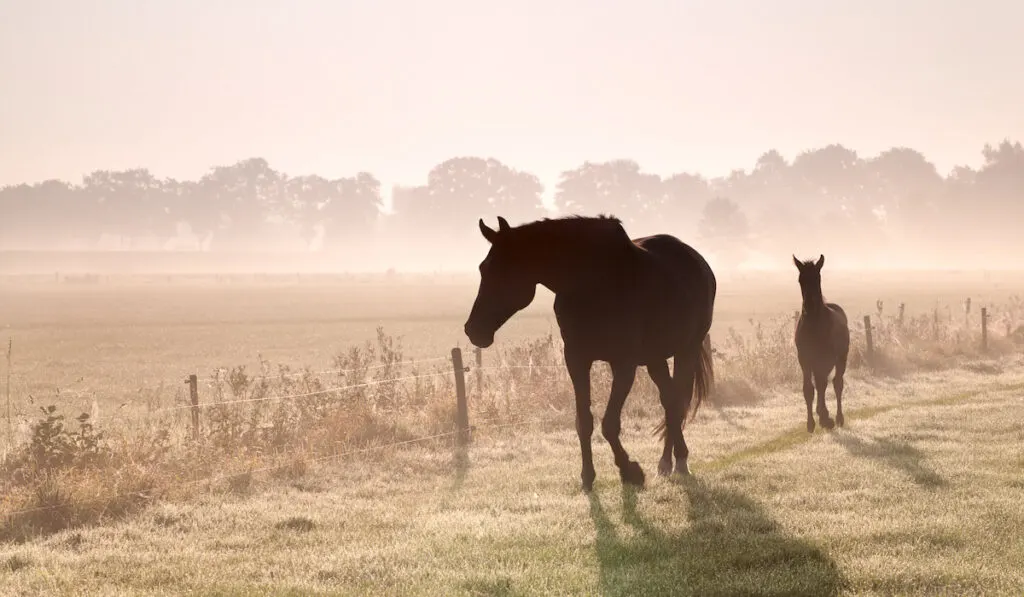
Table of Contents
What Age Should Foals be Weaned?
Most foals are weaned between 5 and 6 months of age however, they can be weaned as early as 3 months and, in the wild, weaning could take longer than a year with som instances of 2 yer olds nursing having been seen.
Several factors must be considered when deciding when to wean your foal. You should look at:
- The condition of the mare
- The health of the foal
- The size of the foal
- How many other foals are ready to be weaned if doing a group weaning
Let’s explore these in more detail.
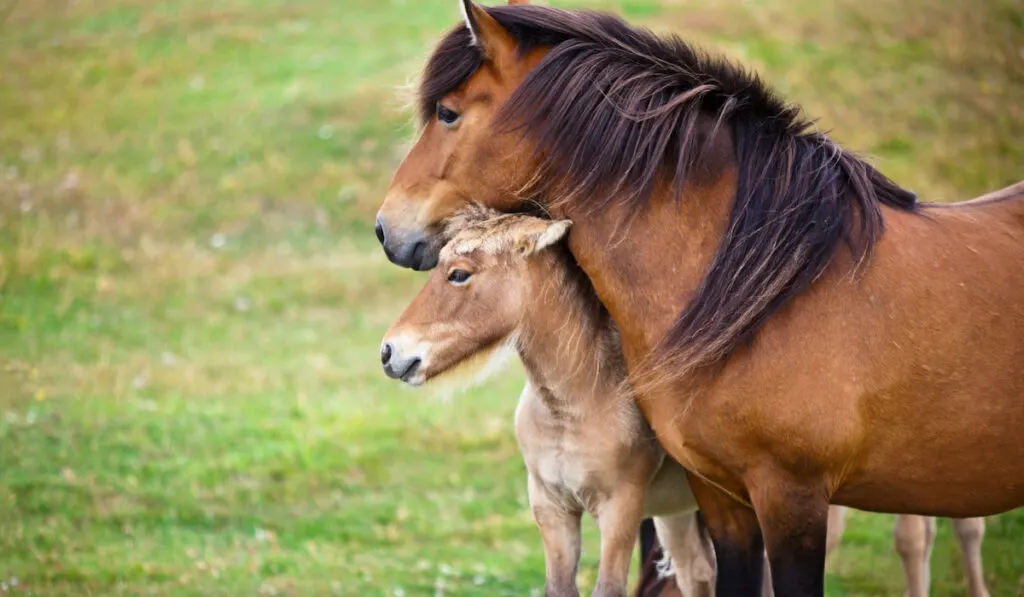
The Condition of the Mare
The condition of the mare is one reason a foal might be weaned early. Older mares, especially, may have a hard time keeping weight while nursing a foal.
Often, a mare’s condition will decline the longer she is nursing a foal. It takes a lot of energy and nutrition to produce milk for a baby and even young mares may start to look ribby.
Extra feed and grain can be provided to help meet a nursing mare’s nutritional needs but, when that is not enough, early weaning may need to be considered.
To decide what age to wean a foal, we need to look at the health and maturity of the foal.
The Health & Maturity of the Foal
While it is possible to bottle raise a foal or supplement a foal with milk, that is not an ideal solution. When considering what age to wean a foal, you will want to take into consideration the health and maturity of the foal.
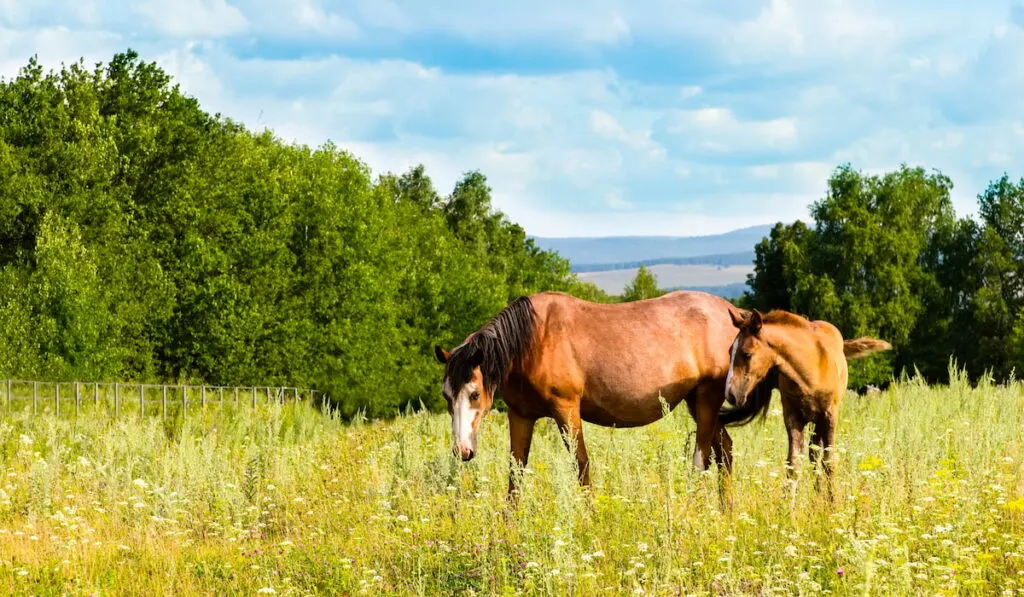
Weaning is a very stressful event for a foal so you want to make sure a foal is in good health before stressing it with the weaning process. If your foal is sick for any reason, it is often best to wait until he is fully recovered before beginning the weaning process.
Additionally, you will want to make sure your foal is mature enough to wean. He should be regularly eating hay alongside his mom as well as enjoying creep feed when provided. Once he is weaned, he will have to get 100% of his nutrition from hay and grain that you provide.
The Size of The Foal
The size of the foal is another consideration. Taller foals may need to be weaned earlier than their shorter counterparts.
As a foal grows, it can be tough for him to get into a position where he can reach the mare’s udder. This is particularly true with taller foals such as thoroughbreds and warmblood mixes.
Foals will often have to spread their legs wide in order to lower their body enough to get access to the milk bar. If this happens for too long, it can start to affect their conformation.
The joints and bones in a foal are soft and repeated strain or stretching may cause a foal with otherwise normal conformation to start to appear toed out.
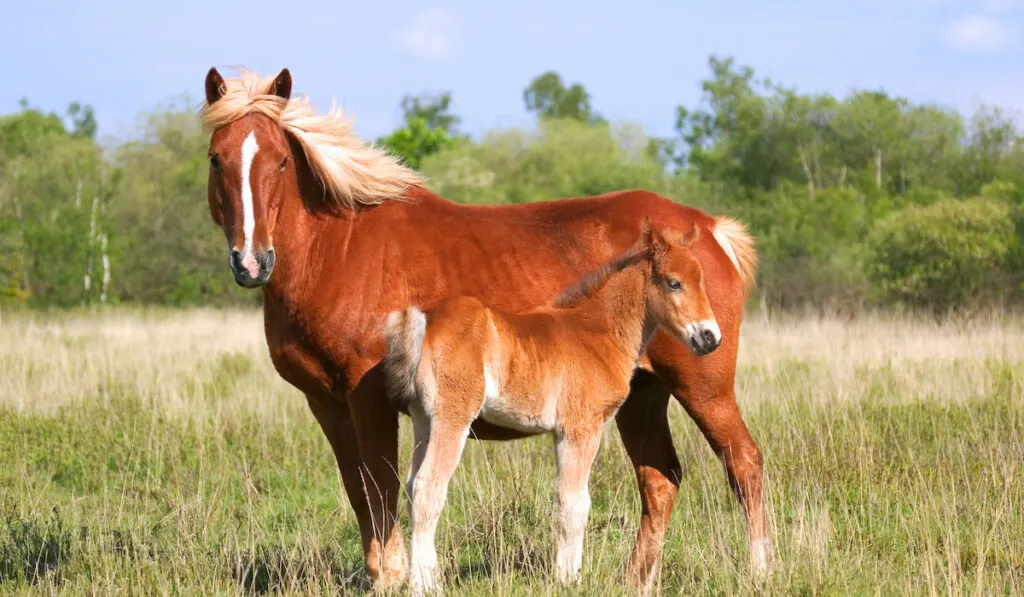
How Many Other Foals Are Ready
If you are doing a group weaning for two or more foals, you will need to decide which foals get weaned based on when the majority of the group is ready.
If your foals span more than a few months in age, you may need to do two or more weaning groups. We’ll explore group weaning in a minute.
5 Methods for Weaning a Foal
Now that we have covered the basics of when to wean a foal, let’s look at the various methods that can be used to do so. Remember that there is no one size fits all solution when it comes to weaning.
Immediate Separation with Mom On Site
One of the most common ways to wean a foal is just to pick a day and separate mom and baby. Usually this is done by putting mom and baby into separate stalls.
This method is also one of the most stressful for mom and baby. They go from being with each other all day long to not being able to be with each other at all.
The emotional distress both may experience could cause them to try to jump fences or run into gates. It can also lead to frantic pacing along a fence line and them accidentally running into objects or scraping themselves on the fence.
My first foal was weaned using this method by her breeder. She tried to jump out of the box stall and suffered a hematoma on her chest that took a couple of weeks to resolve. Mom, an older broodmare, could care less about the whole situation and seemed to be happy enough to be by herself again.
This method of weaning is also the most likely to result in injury to the mare and/or the foal.
Immediate Separation with Mom Off-Site
Some advocate removing the mare from earshot whenever possible in order to reduce stress for mom and baby. The more they hear each other without being able to get to each other, the more they will stress.
Keep in mind that they may still pace frantically for one another or try to jump out of their pen. If the foal can be safely kept in the same stall / area that he has been in with mom, that may be less stressful for him.
Gradual Separation
Gradual separation can be quite a bit less stressful to a mare and a foal. There are a few ways to accomplish gradual separation.
One way to accomplish this is to slowly increase the time mom and baby are away from each other so that when weaning time comes, they are used to being without each other. For a single foal, this is my preferred way to accomplish gradual separation.
At a few weeks old start taking baby just outside the fence / pasture to be groomed. I always start by having the foal just on the other side of the fence. They can still see, smell and touch each other. Gradually, I’ll increase the distance baby is from mom.
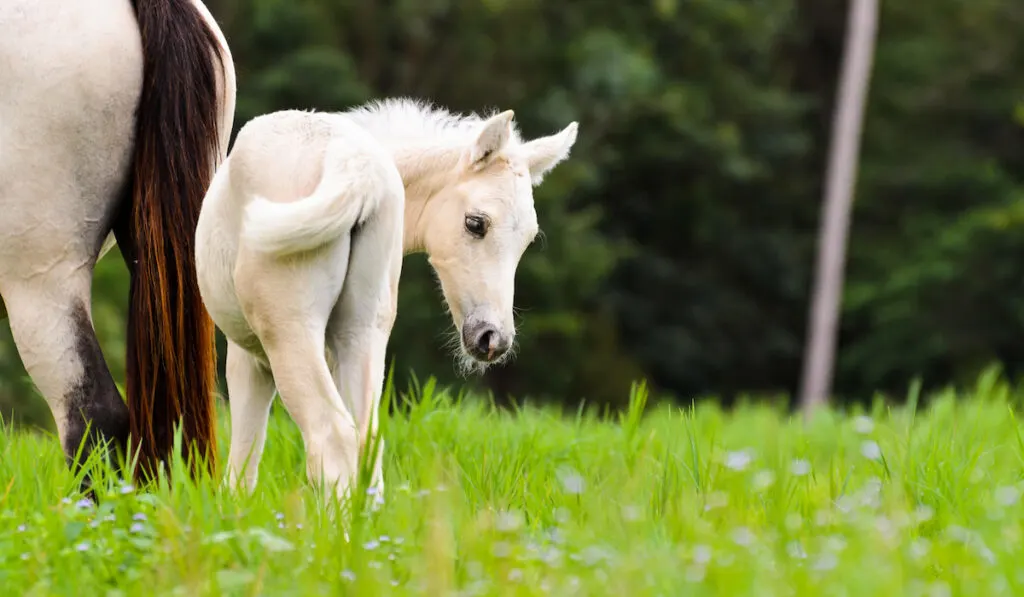
Starting at a few months old, you can tie mom up or leave her in the stall and take baby for short walks around the farm. At first you will want to keep baby in sight of mom but gradual, mom will start to care less and you can take the baby on longer walks. This will help both the mare and foal build confidence without the other one being there.
At about 3 – 4 months of age I’ll typically start ponying the foal out on the trail. I try to always use a pony horse that the foal is familiar with so that they don’t feel as alone.
These trips out may start at only 30 minutes but eventually may be up to 2 hours (at a walk). This gives the opportunity, again, for mom and baby to learn to be without each other.
When it is finally time to wean, my favorite method is to have mom in a big pen (at least 24×24) and baby in a smaller adjacent pen. I prefer to use a pipe corral where mom can come over to the fence and allow the foal to nurse when she wants.
I find that this method can really help alleviate an engorged udder. Most mares will allow the foal to nurse when their bag fills up to help relieve pressure.
Of course, some mares will allow the foal to nurse for months still like this so a final separation must be done. In this case, I typically still keep the foal adjacent to the mare but this time with a mesh panel separating the two.
They can still see and smell each other but the foal can no longer nurse. Slowly I’ll move the foal away so that they both become less dependent on the other’s presence.
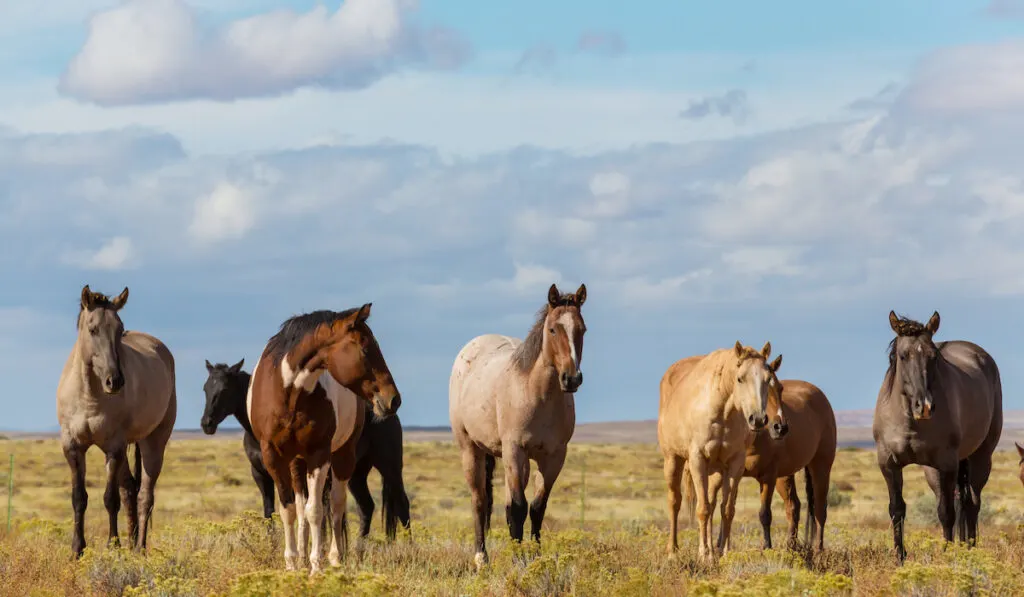
Group Weaning
Group weaning is more common at breeding facilities that have multiple foals but the concepts could be applied with as few as two foals. There are a couple of methods by which group weaning can be approached.
Mare Removal
One way to do group weaning is to have a large pasture with mares and foals, preferably a babysitter gelding as well. With this method, after all of the mares and foals have had time to get to know each other, you would start to remove one mare at a time from the herd. Her foal would stay in the pasture with the group.
This method helps reduce stress for the foal because he is still in a pasture with other foals and mares that he is familiar with. He is still with his “herd” he just doesn’t have mom.
Mom’s stress may still be high but that, of course, will vary depending on the temperament of the mare.
As each foal recovers from having mom leave the herd, a new mare is removed. Eventually, the foals remain with the baby sitter horse and the mares are no longer present.
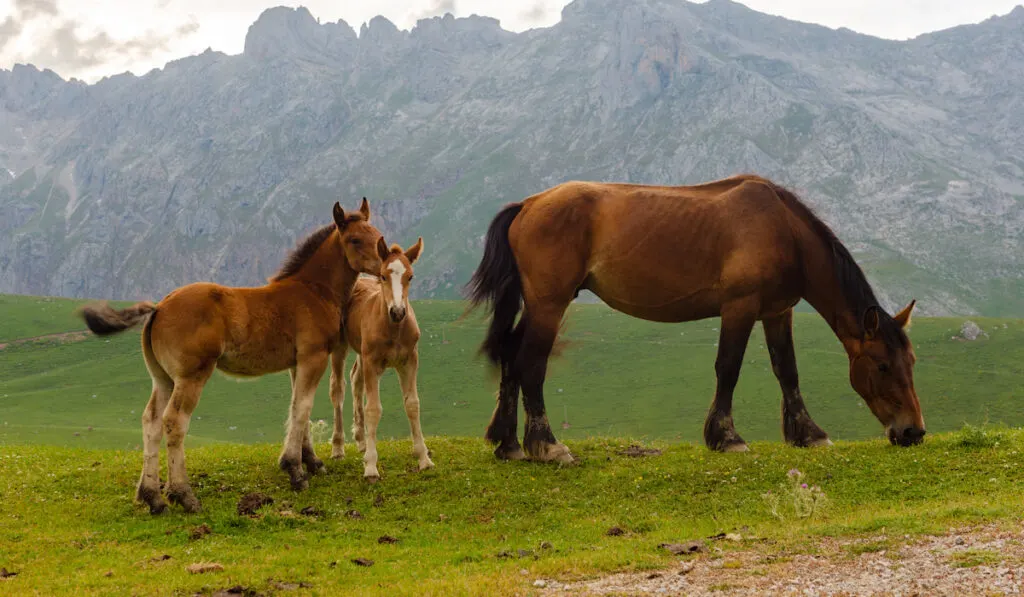
Abrupt Weaning in Groups
When weaning in groups you could also use the abrupt method of weaning as described for a single foal. Typically this results in less stress than weaning a foal individually as the foals have each other for companionship. While they are all upset about losing their mom, as the saying goes, misery loves company.
Udder Care for the Mare
In abrupt weaning situations, when possible it is a good idea to provide the mare with relief by cold hosing her udder for five to ten minutes several times a day. Just because the foal is removed doesn’t mean that her body immediately stops producing milk.
With the foal no longer nursing, the mare’s udder will engorge with milk. This swollen state is uncomfortable and the two best ways to relieve it are exercise and cold hosing.
If the mare is in a pasture, just walking all day will provide her with relief. For the stalled mare, time in turnout, riding or other exercise will help as will regular cold hosing.
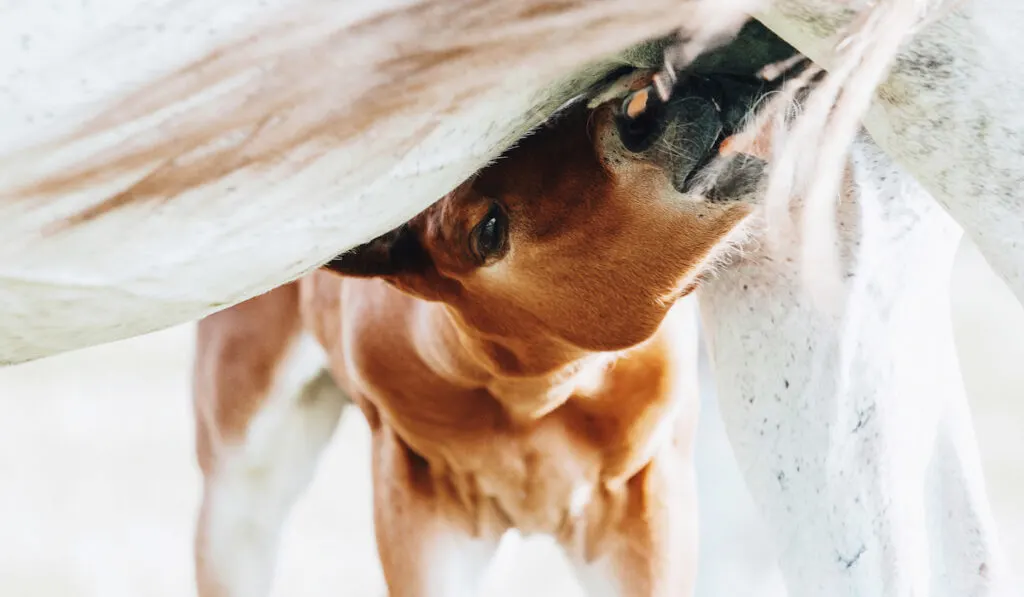
Final Thoughts
The decision of how to wean and when to wean varies depending on each foal and each farms situation. There are a variety of factors that must be taken into consideration.
The ultimate goal is the same in each case, a mare who no longer has to suckle her foal and a foal who is no longer emotionally or nutritionally dependent on the mare.
The idea is to wean your foal in a way that results in the least stress for the mare and foal. When feasible, a gradual separation method is usually best.
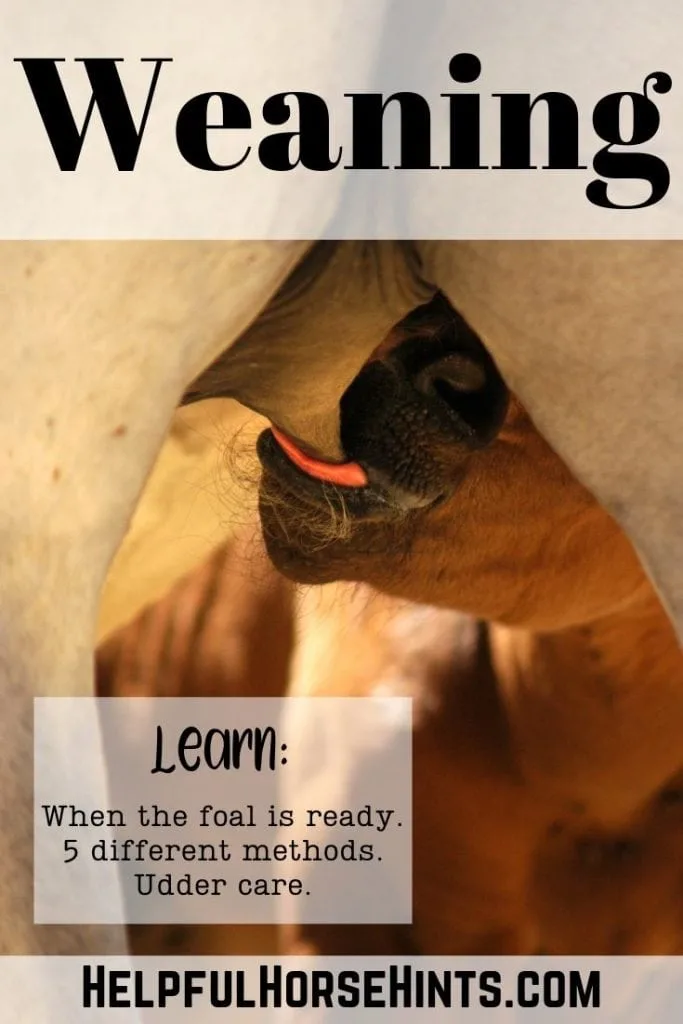
In some cases though, especially on smaller farms, abrupt separation may be necessary. In those cases, you will want to make sure the mare and foal are in areas that have the minimal chance of cutting or injuring themselves should they try to jump out or pace the fence.
In any case, after a few days or a week, the mare and foal will learn to live without each other. Keep in mind though, that even after this stage, you should wait for several months before putting the mare and foal back together full time or they may resume nursing even after the mare has dried up.


